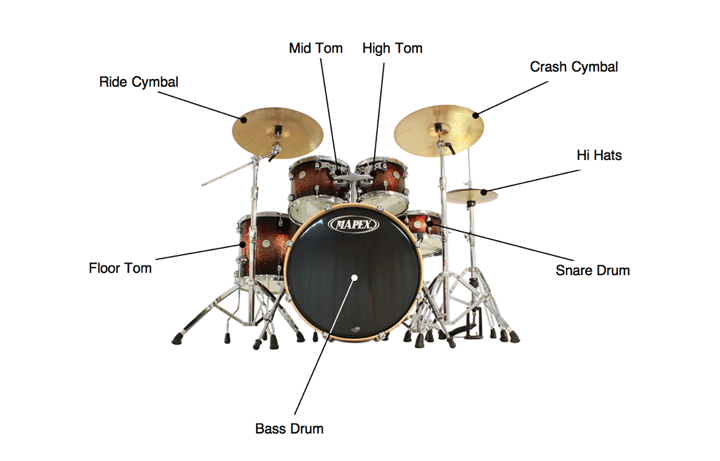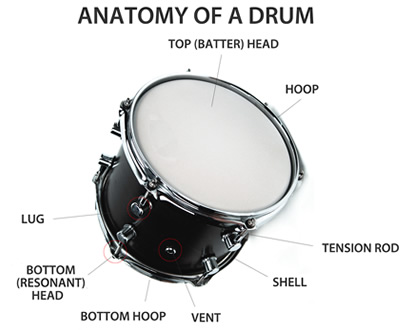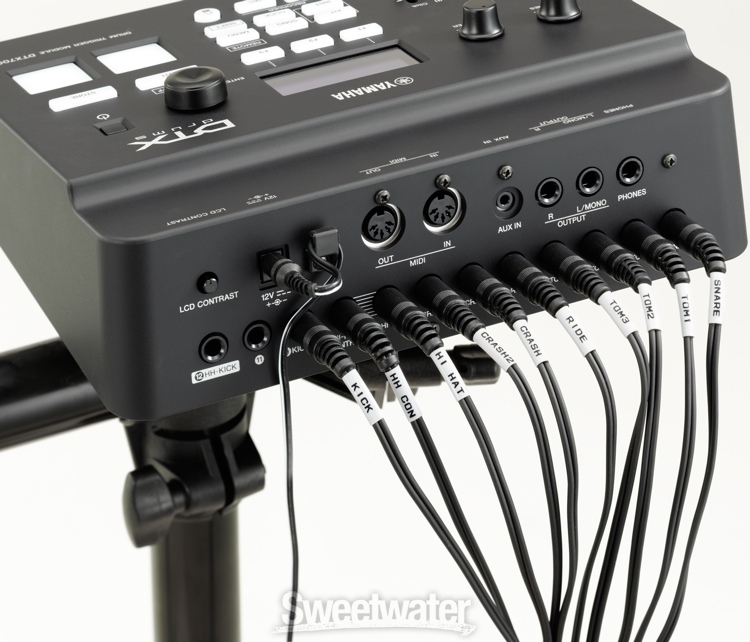
Drum kits have different numbers and diameters of drums. The basic components are the kick, snare, and one or more toms. Larger size tomes produe more volume and deeper tone. Many drummers have additional snare drums to use depending on the style of music and situation.
Read Sweetwater's Acoustic Drum Buying Guide. It covers the parts of drums including their shells, cymbals, and what to look for.
Cymbals
Cymbal sets usually have an upper and lower hi-hat, ride, and crash and are usually purchased separately from the kit. Specialty splash and China cymbals and rivets can be added to offer more effects. Brass cymbals are the cheapest, bronze cymbals usually blend copper and tin.
Shells
Most shells are constructed out of two or more layers (plies). Usually the more plies, the brighter the tone is. The type of wood changes the resonance and therefore the resulting tone. Maple is the most popular wood for drums. Birch is very dense and produces a brighter tone. Like electric guitars, drums come in a variety of finishes. Some are wrapped with vinyl.
Heads
There are many different types of drum heads and vary by the thicknesses, coatings, number of layers, if they have reinforced centers or edges, etc. The tuning can be changed by changing the tension with a drum key. The head on the side you play is called the batter, the bottom side uses a resonant head.
Hardware
Stands come with most complete drum kits. If you already have hardware you can save money by buying "shell" kits that only have the drums. Some players use a rack instead of individual stands.
Drum seats are called "thrones" and are purchased separately. There are many different models, some with backs, some more cushioned than others.
There are lots of choices for kick drum pedal.
Sticks and Brushes
The type of music often influences the choice of stick. Heavier sticks such as 2Bs are good for the volume required for rock and R&B. Lighter stickes like 7As are often used for jazz and acoustic styles. The number indicates the circumference, and the letter for the application, like "S" for marching band, "B" for symphonic band, "A" for orchestra. The tips of the sticks can be wood or nylon. Wood gives a warmer sound, plastic is more durable and plays more clearly on cymbals.
Brushes are generally used for ballads and some acoustic styles. The bristles can be made of metal or plasic.
World Percussion
See Musicians Friend's buying guide covering djembes, congas, cajons, and shakers.

